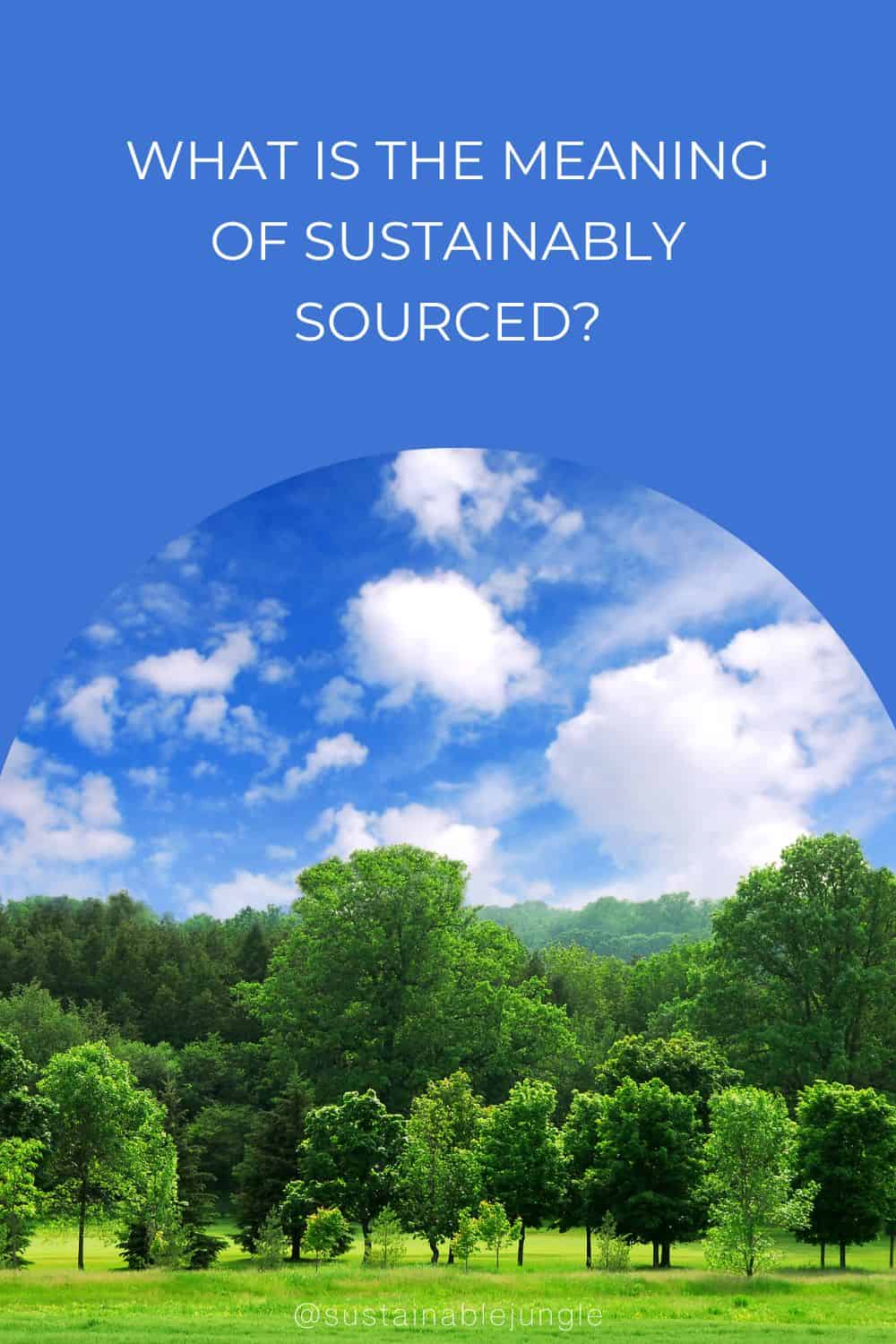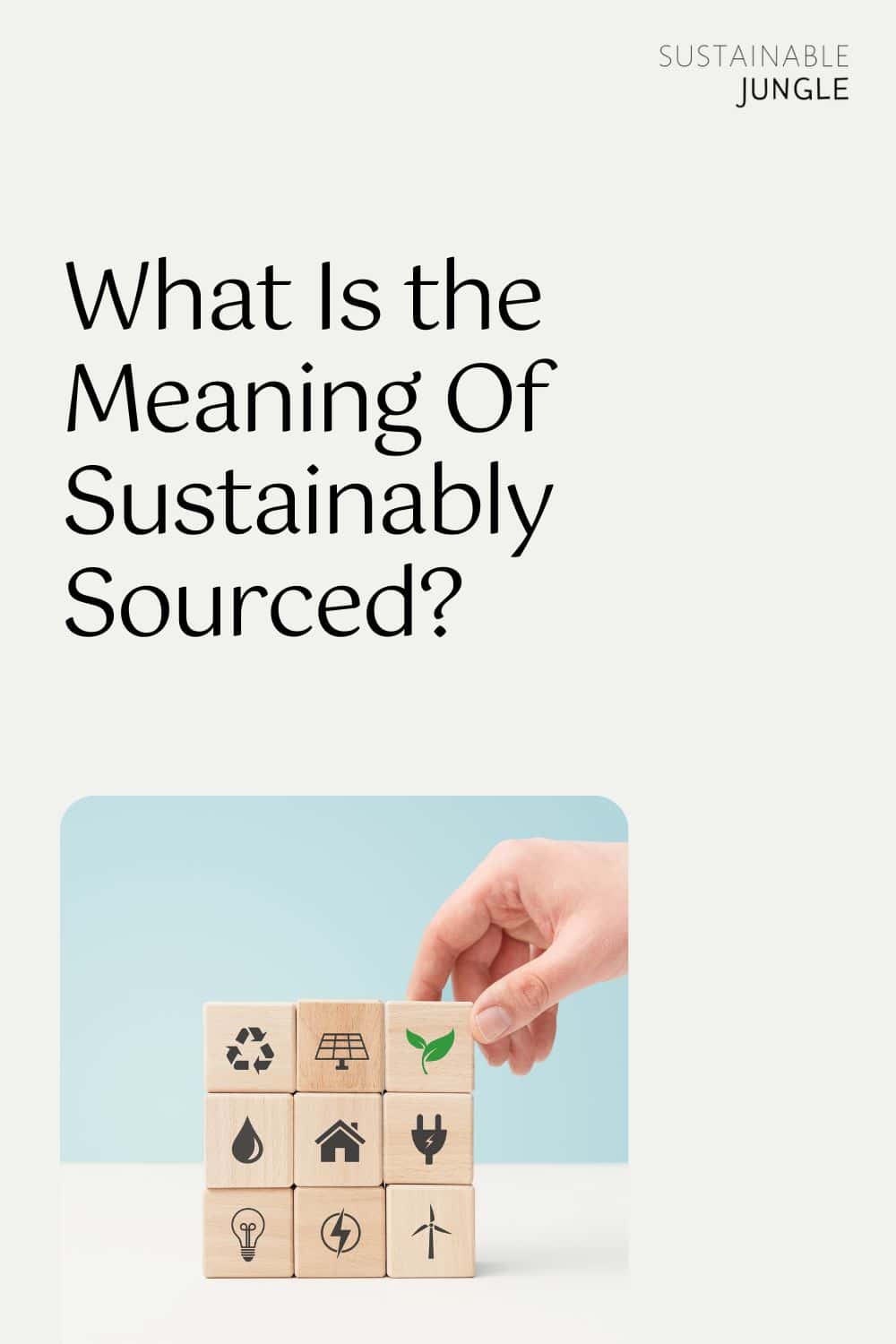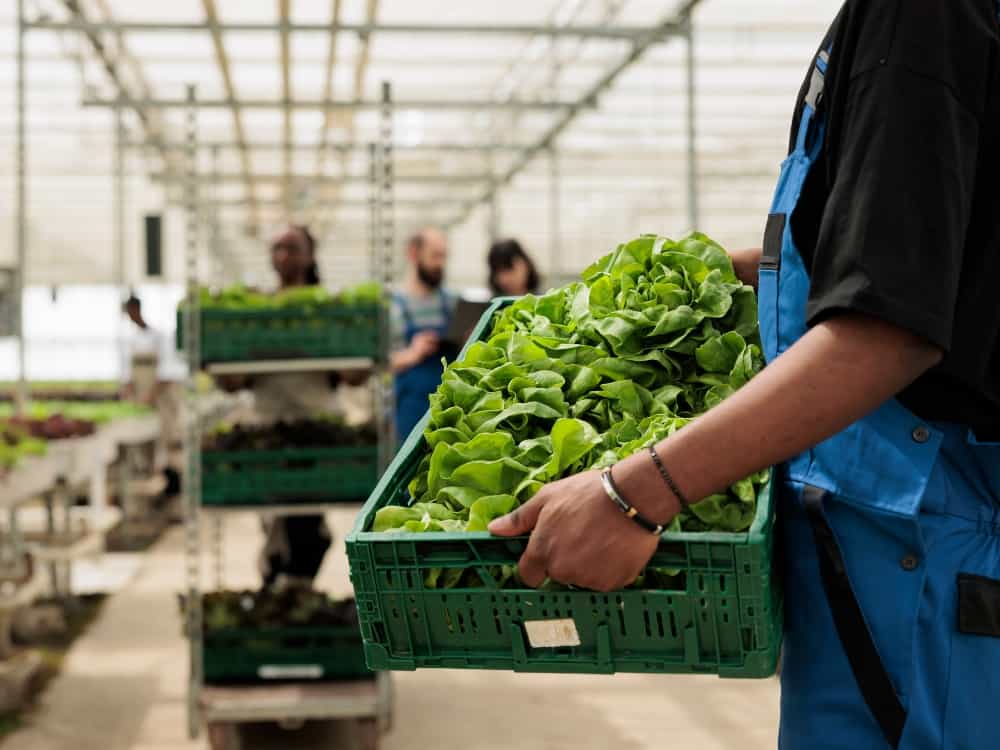
What Is the Meaning Of Sustainably Sourced?
Why might sustainable sourcing be a “hot” topic on the subject of global warming?
92% of the human population now lives in areas where the pollution is above the safe limit.
Humans have managed to wipe out more than 80% of wild and marine mammals.
8.3 billion tons of plastic have been produced since the 1950s, and make up for three-quarters of all beach waste today.
And at the time of writing this article, the world continues to experience its hottest months on record ever.
And no wonder, when it’s not uncommon to find a single banana in the supermarket wrapped in single-use plastic with a stamp “grown in Thailand, packaged in Argentina” and then sold in, say, Japan or Brazil.
You don’t need a masters in sustainability to see that something must change….that’s not climate change.
While the issue of environmental destruction is complex, sourcing sustainable materials through effective supply chain management is one way to significantly reshape how we are doing things for the better.
Let’s take an industry look at the sustainably sourced definition, what exactly it will take, and why it matters to those interested in responsible approaches to managing rampant consumerism’s abuses.
The Full List For What Is Sustainable Sourcing?
- What does ‘sustainably sourced’ mean?
- Sustainable sourcing examples
- Why is sustainable sourcing important?
- Sustainable vs ethical sourcing
- How do you know if something is sustainably sourced?
- What are the elements of sustainable sourcing?
- Sustainable sourcing certifications
- Companies with a sustainable sourcing strategy
- Additional ethical & sustainable procurement resources
1. What Does ‘Sustainably Sourced’ Mean?

To understand what ‘sustainably sourced’ means, first we should break down what sustainability means.
The broad and globally accepted definition, coined in the 1990s by the Brundtland Commission and endorsed by the UN, says:
“Sustainability means meeting our current needs without compromising the ability of future generations and societies to meet their own across time and geographies.”
While perhaps a fuzzy concept, sustainability—and thus the sustainable living ideal—is the conceptual framework by which people’s actions and choices are made to pursue a more equitable earth with environments, economies, and communities all able to thrive over an undefined, long period of time.
It’s a normative social concept, so sustainable practices will shift as human values likewise shift through time and experience.
But how do we actually achieve it in a world driven by a relentless and wasteful market economy?
For that, we shift to the sustainable sourcing definition.
While not officially or legally defined, according the UN, the sustainably sourced meaning is:
“Sourcing the materials, products and services an organization needs from its suppliers in a sustainable manner, thereby taking into account the environmental and social impact of its supply chain strategies and activities.
“Sustainable sourcing applies a holistic approach which is critical to business-as-usual (triple) bottom line thinking, and takes into account the environmental and social boundary conditions of sourcing strategies.
“Sustainable sourcing thereby exceeds formal accountability regarding sustainability as imposed by governments, and goes beyond perspectives regarding the Triple Bottom Line [people, planet, profit] as a balancing act. “
In other words, how we source products, textiles, food items, and raw materials matters, if we want to positively sustain our businesses, our planet, and our communities.
A company is only as sustainable as the root of their supply chain, which is why sustainably sourced materials are essential to sustainability, period.
Something truly sustainably sourced should reduce negative environmental impact to its full capacity, do no net harm to nature or communities, and still generate a profit and provide long-term viability for the brand.
Customers willing, a truly sustainable value chain should be able to keep doing business forever.
2. Sustainable Sourcing Examples
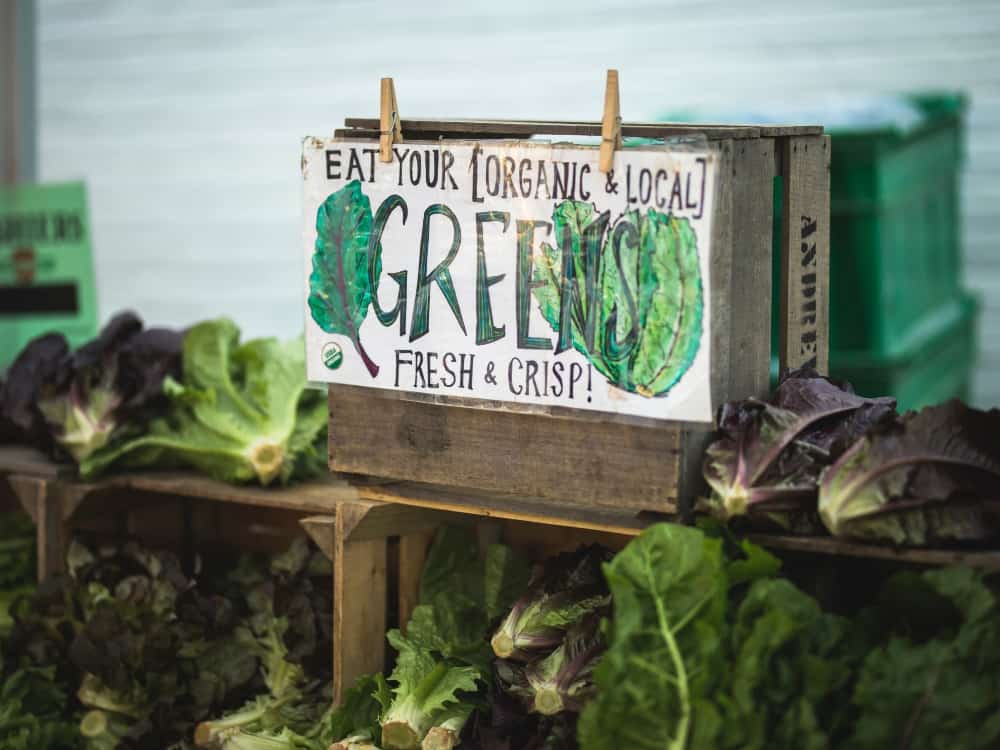
What is sustainable procurement, practically speaking? In other words, what is an example of sustainable sourcing?
For a product to be sustainable, it must be produced and/or consumed in a manner that does not cause destruction or harm to the planet or people.
Items that are fair trade, organic, or vegan or cruelty-free would all fall under the umbrella of sustainably sourced.
Products that especially call for sustainable sourcing due to environmental concerns, conflict regions, destructive extraction, possible extinction, animal welfare, cash cropping, and more include:
- Sustainably sourced wood: Reclaimed wood or that procured using certified sustainable forestry practices. This applies to everything from sustainably sourced furniture to sustainably sourced paper products.
- Sustainably sourced energy: Prioritizing energy efficiency and renewable energy, instead of fossil fuels.
- Sustainably sourced palm oil: Sustainable palm oil means that which does not contribute to the deforestation or habitat and biodiversity loss associated with the traditional palm oil industry
- Sustainably sourced diamonds, jewels, gemstones, minerals, and precious metals: Recycled, fair mined, or synthetically crafted (i.e. lab created diamonds)
- Sustainably sourced fish and meat: From sources that practice wild harvesting or ethical pasture raising techniques.
- Sustainably sourced cocoa: Anything and everything edible can come from a sustainable source (or not), but cocoa is especially common. Sustainable agriculture takes into account pesticide usage, water, carbon emissions, and soil conservation.
- Sustainably sourced coffee and tea: Wild harvesting, shade grown varieties, and organic practices
- Sustainably sourced clothing, cotton, leather, and wool: Organic cotton or ethical wool are examples. More and more brands are practicing regenerative agriculture in this sphere.
- Sustainably sourced mica powder: Mined without child labor and huge energy consumptive practices.
Sustainably sourced products should go above and beyond baseline laws and contracts, and consider environmental, social, and ethical practices to reduce value chain harms.
As a rule-of-thumb, something is a sustainably sourced ingredient if it:
- Doesn’t deplete natural resources
- Causes no direct harm to the environment: Sourcing, production, distribution, and/or consumption must use energy efficiently, minimize waste, and responsibly dispose of pollutants. Since almost nothing is 100% free of environmental impact, harm must be demonstrably minimized and counter-balanced.
- Procured in a socially responsible manner: Fair wages, decent working conditions, no forced or child labor, and labor unions for farmers and workers are also considered sustainable sourcing practices.
3. Why Is Sustainable Sourcing Important?
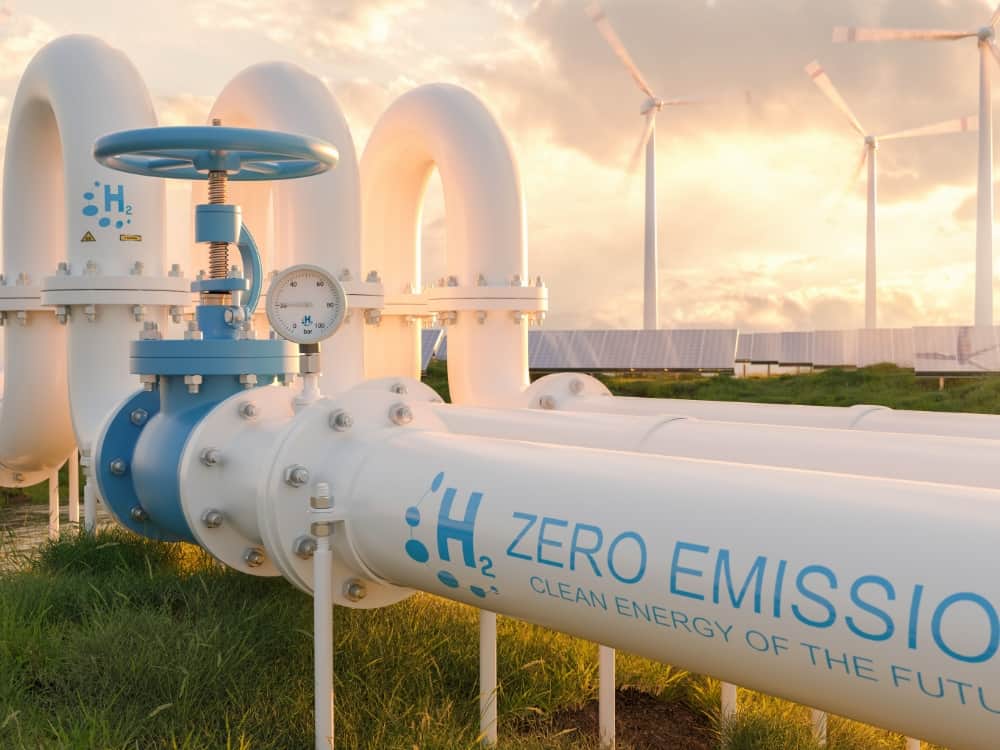
The UN says supply chains are the “engines for today’s global economy,” working tirelessly to provide goods and services worldwide, connecting brands and the humans who work for them across industry, cultural, geographic and regulatory boundaries.
Supply chain sustainability helps everyone’s needs to be met now and in the future, in environmental, economic, social, and ethical terms.
However, globalization of goods at the behest of offshoring for large companies’ competitive advantages has also given rise to relentless markets and production expansion.
With that, comes environmental destruction, increasing greenhouse gas emissions generated, and locally affected communities.
According to the UN’s Development Programme:
“To help countries achieve the simultaneous eradication of poverty and significant reduction of inequalities and exclusion, while at the same time address the issues of climate change […] sustainable procurement means making sure that the products and services [… ] are as sustainable as possible, with the lowest environmental impact and most positive social results. Procurement, therefore, plays a key role in contributing to sustainable development.”
What Are Benefits Of Sustainable Sourcing?
It goes without saying that sustainable sourcing is not just beneficial, but crucial to the environment.
Balancing the Triple Bottom Line—people, planet, profit—or purchasing carbon offsets is no longer enough to ease the impacts that industry has had on this Earth in the last 200-or-so years.
Two-thirds of the average corporation’s environment, social, and governance footprint lies in its value chain, and up to 90% of its GHG emissions are attributed to the base of the chain.
When brands support suppliers to ensure water resources are protected, waste is properly managed, non-renewable energy is minimized, and the environment isn’t depleted or polluted by human endeavors, it helps us to build a more circular economy and provides environmental benefits.
While the environment is the biggest beneficiary of sustainable sourcing, that alone may not provide enough incentive for those being completely realistic about today’s capitalist society.
Fortunately, it’s not the only one.
From a business and profit standpoint, there’s money in sustainable sourcing, meaning more brands may be incentivized to adopt some of its best practices as time goes on.
84% of consumers consider sustainability important when buying; 34% of consumers plan on increasing their sustainable purchasing; while 54% of consumers stopped buying from organizations they believe have harmed the environment or caused social issues.
As such, sustainable sourcing wields huge purchasing power, and accounts for approximately 12% of OECD countries GDP, and up to 30% of the GDP in developing countries.
According to the UNDP, promoting sustainable sourcing to leverage this purchasing power will play a key role in achieving the Sustainable Development Goal 12.
Holistic sustainable procurement and supply chain management that extends beyond the Triple Bottom Line (people, planet, profit) and ESG (environment, social, governance) is becoming the new norm for any thriving capitalist venture.
There are numerous other benefits of sustainable sourcing, too:
- Promotes integrity, transparency, traceability, and accountability
- Builds supply chain resilience and reduces its footprint, which is an appropriate response to climate change and global disruption
- Competitive advantage that increases market share and consumer satisfaction
- Stay ahead of increasing legislation
- Reduces costs and increases over efficiency once established with vetted vendors
- Risk management and a more positive brand reputation, which in turn enhances shareholder value
- Conserves and ideally restores scarce resources, ends exploitation of environment, local communities, and human rights
- Enables higher long-term returns and lower risk with ESG (environmental, social, governance) investments
- Promotes stronger supplier relationships that result in innovations and resiliency
- Future-proofing: protects against environmental effects like climate change and food scarcity, economic effects like fluctuating currencies and economies, and social factors like shifting technology, disruption, social unrest and more.
4. Sustainable Vs Ethical Sourcing

The phrases ‘sustainable sourcing’, ‘ethical sourcing’, and to a lesser degree ‘responsible sourcing’ or ‘green sourcing’ are often applied interchangeably, although each phrase refers to something slightly different.
For instance, for those wondering, “What is responsible sourcing?” it tends to refer to legal compliance with global best practices or upholding a code of conduct.
So what is the difference between ethical and sustainable sourcing?
Sustainable sourcing of materials predominantly focuses on environmental performance factors over time, while ethical sourcing emphasizes social responsibility and humane working conditions.
That’s not to say ethical and sustainable procurement do not overlap in either their goals or benefits.
For example, sustainable sourcing programs also tend to also dismantle the pilfering for lower cost raw materials at the expense and exploitation of developing nations.
In fact, one might think of sustainable sourcing as the umbrella under which all other forms of responsible sourcing fall.
That’s because sustainability encompasses and goes above and beyond ethical, responsible, and green sourcing, to ensure the world’s resources and peoples are protected for future generations.
The challenge with all of these terms is their lack of a universal definition to ensure clarity, consistency, and agreed-upon criteria.
5. How Do You Know If Something Is Sustainably Sourced?
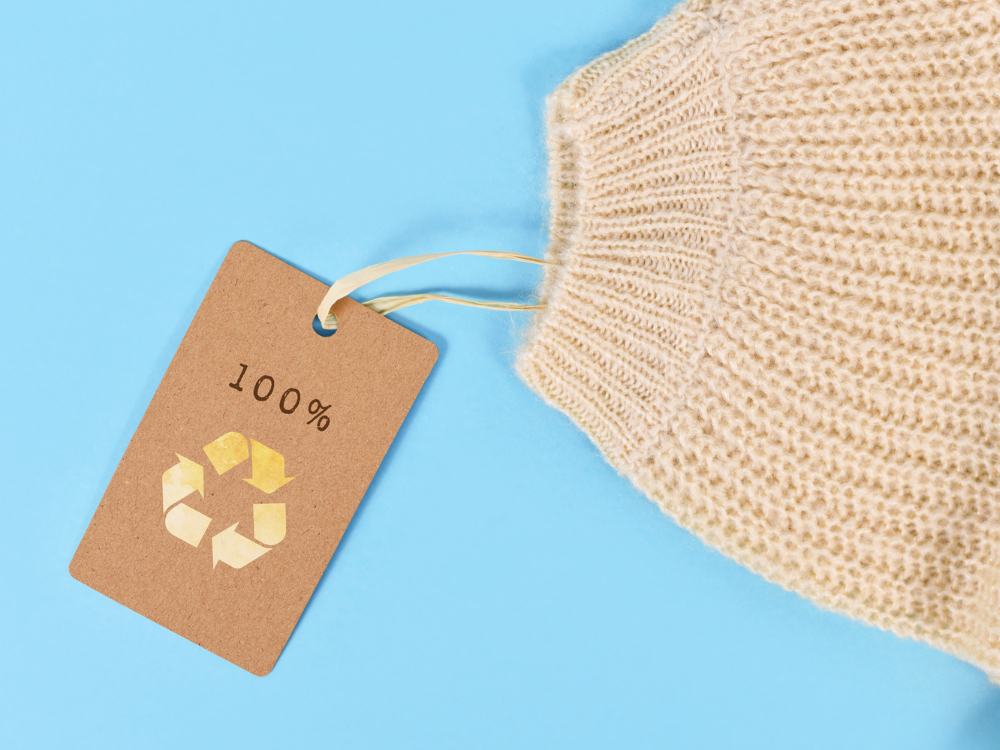
While it’s advantageous marketing and aspirational for a brand to claim something is ethically or sustainably sourced, determining whether this it’s true is often tricky (hello, greenwashing!).
So, how do we really know what is sustainably sourced?
Fortunately, sustainable sourcing programs are no longer “niche” for the green-minded, for example, deforestation-free wood and paper products.
Progress is happening in terms of a global and legally-binding sustainability assessment.
The International Sustainability Standards Board (ISSB) will soon become a framework providing a comprehensive global baseline of high-quality sustainability disclosure standards.
The goal is that this will provide companies worldwide with a unified lexicon and approach to sustainability reports, regardless of their nationality.
It’s meant to likewise address the fragmented landscape of voluntary, sustainability-related standards and requirements that add cost and complexity for brands.
In turn, this should also improve transparency in reporting.
Additionally, the EU Taxonomy Delegated Act will allow everyone to share a common definition of environmentally sustainable economic activities to mitigate climate change, address sustainable use and protection of water and marine resources, transition the EU to a circular economy, prevent pollution, and restore biodiversity.
But legislation is slow-moving and new, so the onus mostly falls on the consumer to make the principled choice to support sustainable supply chains.
There are a number of elements to the sustainable sourcing process that can help determine if a product serves the sustainability criteria.
6. What Are The Elements Of Sustainable Sourcing?

As with the fuzzy definition of sustainable sourcing, it also has no legally-bound criteria.
But what is sustainable procurement without a way to measure its meaningful impact?
We’ve gathered some sustainability metrics and sustainable sourcing best practices from the likes of the WWF, World Bank, and UN:
Environmental Standards & Assessment:
Before a business procures any ingredients, items, or services, they carry out an environmental assessment of suppliers and manufacturing entities.
This looks at the impact that the purchase will have on the environment and its local communities—especially indigenous peoples—and if it aligns with the company’s sustainability goals.
Transparency, Traceability, & Accountability:
There should be transparent, traceable, and systematic evaluation, onboarding, and management of any suppliers or processes.
Brands must establish clear expectations and well-documented guidelines, policies, codes of conduct, and systems for monitoring and approving purchasing requests, managing vendors, data and record-keeping, inventory management, and other considerations.
Green Logistics & Value Chain Practices:
Preference for items using closed-loop and/or handmade approaches, small batches, reduced delivery mileage, freight shipping instead of air, environmentally friendly packaging of goods, less raw materials extracted, lower energy needs, renewable energy on-site, conservation and regeneration strategies, and reduced and responsibly managed waste and pollutants are hallmarks of sustainable sourcing operations.
Policy & Implementation:
It’s not enough for a brand to develop policy, it must be demonstrably implemented.
For example, wood extracted from a higher-risk forest must demonstrate risk was mitigated by providing technical assistance to suppliers to reduce any harm to the local environment and neighboring communities.
Regular Internal & Third-Party Audits:
Accurate data is a necessary element of a brand’s supply chain sustainability. To alleviate and manage risks to the ecosystem, biodiversity, and climate, a business needs to conduct an internal audit at regular (likely annual) intervals, along with third-party audits from a reputable independent auditor.
Data must be collected, organized, managed, and compared against each other to accurately assess and adjust sustainable sourcing decisions accordingly.
Supplier Engagement:
Consumer goods manufacturers will often delegate orders from their higher-ups to further vendors. It can be easy for a business to lose the full scope of their sourcing and manufacturing.
Strong, transparent relationships with high-quality suppliers who share their sustainability goals are essential to sustainable sourcing performance, transparency, and traceability.
Public Disclosure:
While research is conflicted if public ESG disclosure improves the sustainability performance of a brand, that’s probably because most studies go at it from the vantage of the business’ profitability, not the consumer’s or environment’s well-being.
Public disclosure helps businesses set measurable benchmarks and achieve time-bound goals.
And if not, the public can hold them accountable.
For example, McDonalds grabbed headlines eight years ago when they publicly announced they were ending contributions to deforestation along their global value chain. A recent damning report shows that McDonald’s is still linked to Amazon deforestation.
Standards & Certifications:
Brands (who can afford it) should invest in respected third-party sustainability standards and certifications to ensure their suppliers meet sustainable sourcing requirements.
7. Sustainable Sourcing Certifications
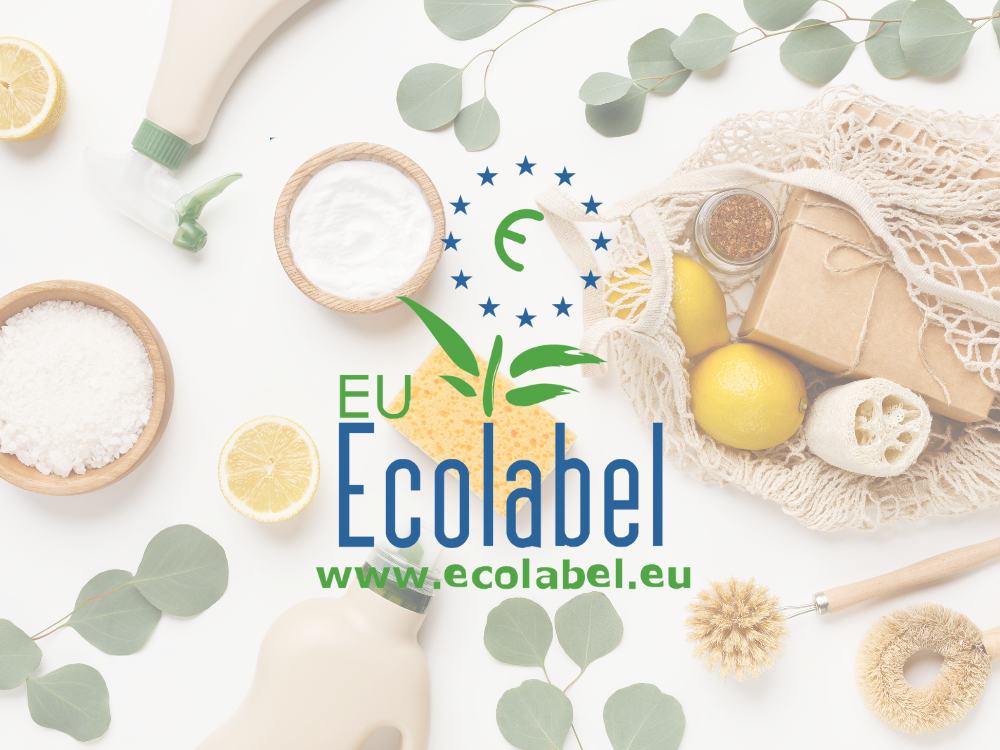
Purchasing sustainably isn’t always straightforward. The first thing you can do is check the label or tag of the product or service in question.
For example, the product label may indicate:
- Made from reclaimed or recycled materials (i.e. 100% post-consumer recycled plastic)
- Derives from renewable resources (i.e. sustainably sourced salmon caught via wild harvesting)
- Organic
- Fair trade
- Biodegradable or compostable
- Vegan and/or cruelty-free
Admittedly, it’s a label jungle out there, which can be confusing for consumers who want to make the sustainable choice.
That said, voluntary third-party sustainability certifications are a useful way to verify a brand’s sustainable sourcing practices, with different labels offering verification of different ethical standards.
While none of these certs are 100% a sure bet (as we know from B Corp greenwashing claims), they provide a decent degree of confidence in a brand’s operations.
- B Corporation (B Corp)
- bluesign®
- Better Cotton Initiative (BCI): BCI cotton refers specifically to sustainable cotton sourcing
- Cradle 2 Cradle Certified (C2C)
- Environmental Working Group (EWG)
- EU Ecolabel
- Fair trade: Or any number of the different certifications under this umbrella (i.e Fair For Life, Fair Wear, FairWild, and World Fair Trade Organization (WFTO)
- Forest Stewardship Council (FSC)
- Global Coffee Program (GCP)
- Global Organic Textile Standard (GOTS)
- Global Recycle Standard (GRS)
- Leadership in Energy and Environmental Design (LEED)
- Leaping Bunny: A cruelty-free certification for sustainable beauty products
- Leather Working Group (LWG)
- MADE SAFE
- OEKO-TEX
- People for the Ethical Treatment of Animals (PETA)
- Programme for the Endorsement of Forest Certification (PEFC)
- Rainforest Alliance
- Responsible Down Standard (RDS)
- Responsible Wool Standard (RWS)
- Roundtable on Sustainable Palm Oil (RSPO)
- Social Accountability International (SA8000, SA26000)
- Sedex Members Ethical Trade Audit (SMETA Audit)
- Soil Association
- Sustainable Forestry Initiative (SFI)
- Business Social Compliance Initiative (BSCI)
- UL Greenguard
- USDA Organic
- USDA Biopreferred
- Vegan Approved
- Worldwide Responsible Accredited Production (WRAP)
- ZQ Merino Standard
8. Companies With A Sustainable Sourcing Strategy

From sustainable food brands to eco-friendly clothing brands, here are some examples of companies demonstrating a solid sustainable sourcing policy:
- Beko: This brand pushes the envelope of eco-friendly appliances by using recycled materials for appliances—such as PET bottles, fishing nets, eggshells, and coffee grounds—rather than virgin mined ones.
- Blueland: the popular zero waste cleaning brand’s efforts have eliminated over one billion single-use plastic bottles from the ocean and landfills. They’re also Certified B Corp, Climate Neutral, Cradle to Cradle, Environmental Protection Agency (EPA), Safer Choice, MADE SAFE, USDA BioPreferred, and EWG certified.
- Colorful Standard: This organic clothing brand is so confident in its materials, processes, and supply chain, it invites visitors for tours at its factory. They use only GOTS certified cotton, GRS-certified recycled wool, and OEKO-TEX dyes.
- Ethique: vegan and cruelty-free, palm oil free, ethically and sustainably sourced, living wages, charitable contributions, and zero plastic means this B Corp eco-friendly hair, beauty, and home product brand aces what we’re talking about here.
- Mejuri: One of the best conscious jewelry brands, with fair trade, traceable gold from 70% recycled sources and 30% responsible sources.
- Nature’s Path: An organic snack company that practices sustainable food sourcing.
- Patagonia: Sustainability legends in sustainable outdoor clothing who are also B Corp founders and Fair Trade certified.
- tentree: Their popular sustainable basics and outdoor wear feature recycled materials and sustainable supply chains, with B Corp, Fair Wear Foundation, WRAP, Fair Trade, BSCI, and SA8000 certs.
9. Additional Ethical & Sustainable Procurement Resources:
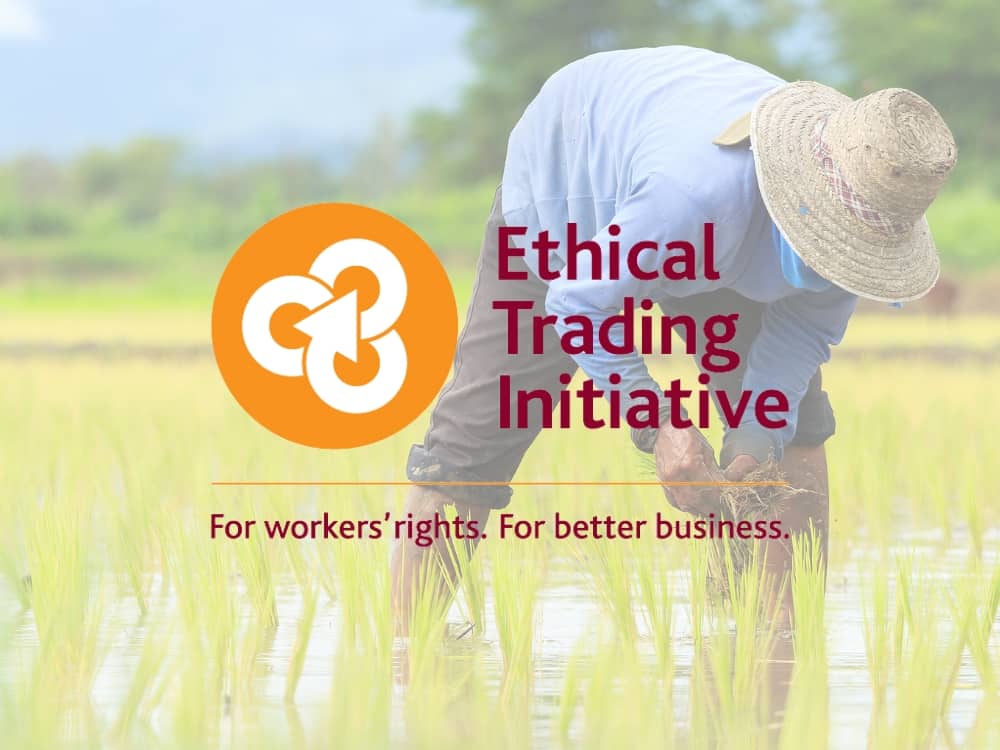
- Eco Label Index: Tracks 456 ecolabels in 199 countries, and 25 industry sectors as the largest global directory of ecolabels.
- EcoVadis: Helps brands effectively manage global supply chain risk and compliance.
- Electronics Industry Citizenship Coalition (EICC): Ensure that business operations are environmentally responsible and conducted ethically and working conditions are safe and dignified in electronics industry manufacturing.
- Ethical Trading Initiative (ETI): Supports ethical supply chains worldwide by providing a standardized base code on which brands can build their Code of Conduct.
- Green America: Their database can help you find green (not greenwashed) products and services.
- Fair Factories Clearinghouse (FFC): A “pioneer in standardizing workplace compliance”
- Global Social Compliance Programme (GSCP): A global network for all industries driving better and more sustainable supply networks forward.
- Global Reporting Initiative (GRI): Provides “the world’s most widely used sustainability reporting standards”.
- MIT’s Sustainable Supply Chain Lab: Interesting interdisciplinary studies, approaches, experiments, and applications.
- Pharmaceutical Supply Chain Initiative (PSCI): Helping build more sustainable supply chains throughout big pharma.
- Railsponsible: Aims to make railway supply chains more sustainable.
- Sedex: The largest global sustainable supply chain assessment firm
Did you know we Have a Newsletter?
We cover the latest in sustainable living, fashion, zero waste, beauty, travel, finance and more…
Final Thoughts On Sustainable Material Sourcing
While critics of “sustainability,” “sustainable sourcing,” and “sustainable supply networks” may denounce them as buzzwords, utopian dreams, or “essentially meaningless,” sustainably sourced materials are in huge demand, providing a massive opportunity to do some good.
When we prioritize the environment, biodiversity, ecosystems, and the local communities that are a part of them, we help to restore the Earth.
As shoppers, we can consume more sustainably through dollar voting. By choosing to support companies that advance sustainability and uphold social responsibility across the board of their operations, we’re a skip closer to a better future for everyone.
Sustainable sourcing practices prove that the term “sustainability” in fact is not meaningless, when concrete actions are taken to do business the better way.
Until we completely reshape the capitalist status-quo, brands must be a force for good.
By spreading the news on how to source them, you’ll keep the positive momentum moving in a greener direction.
Pin these:
